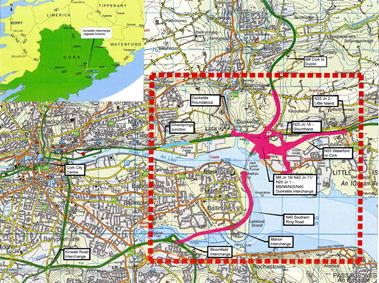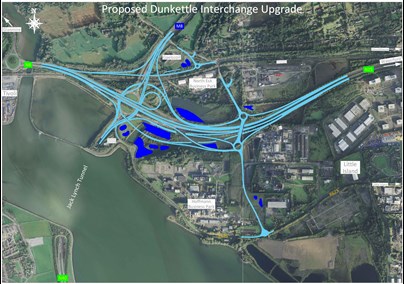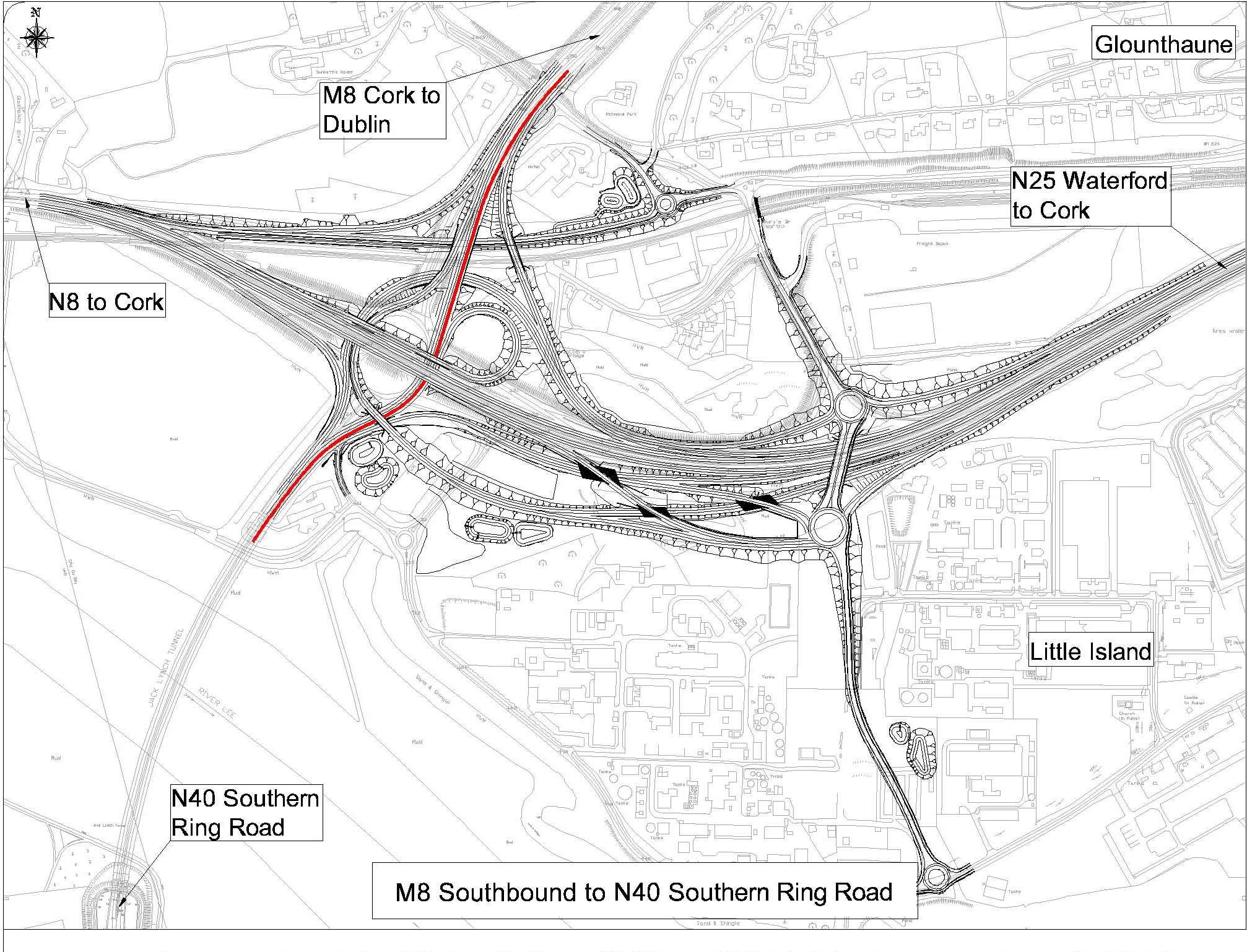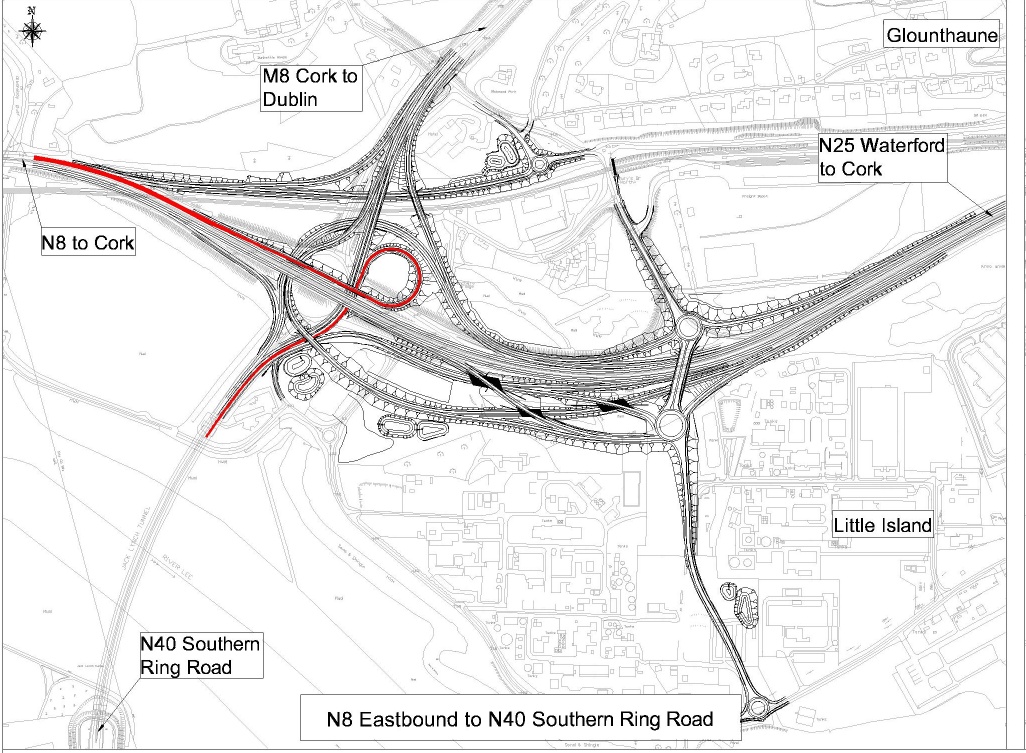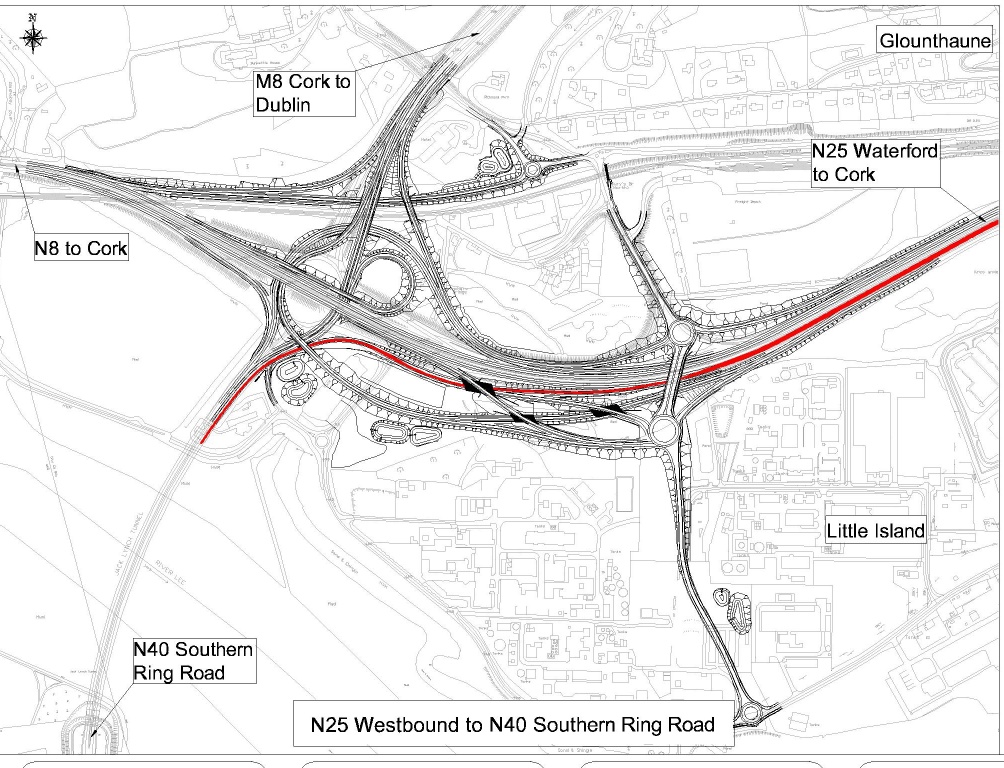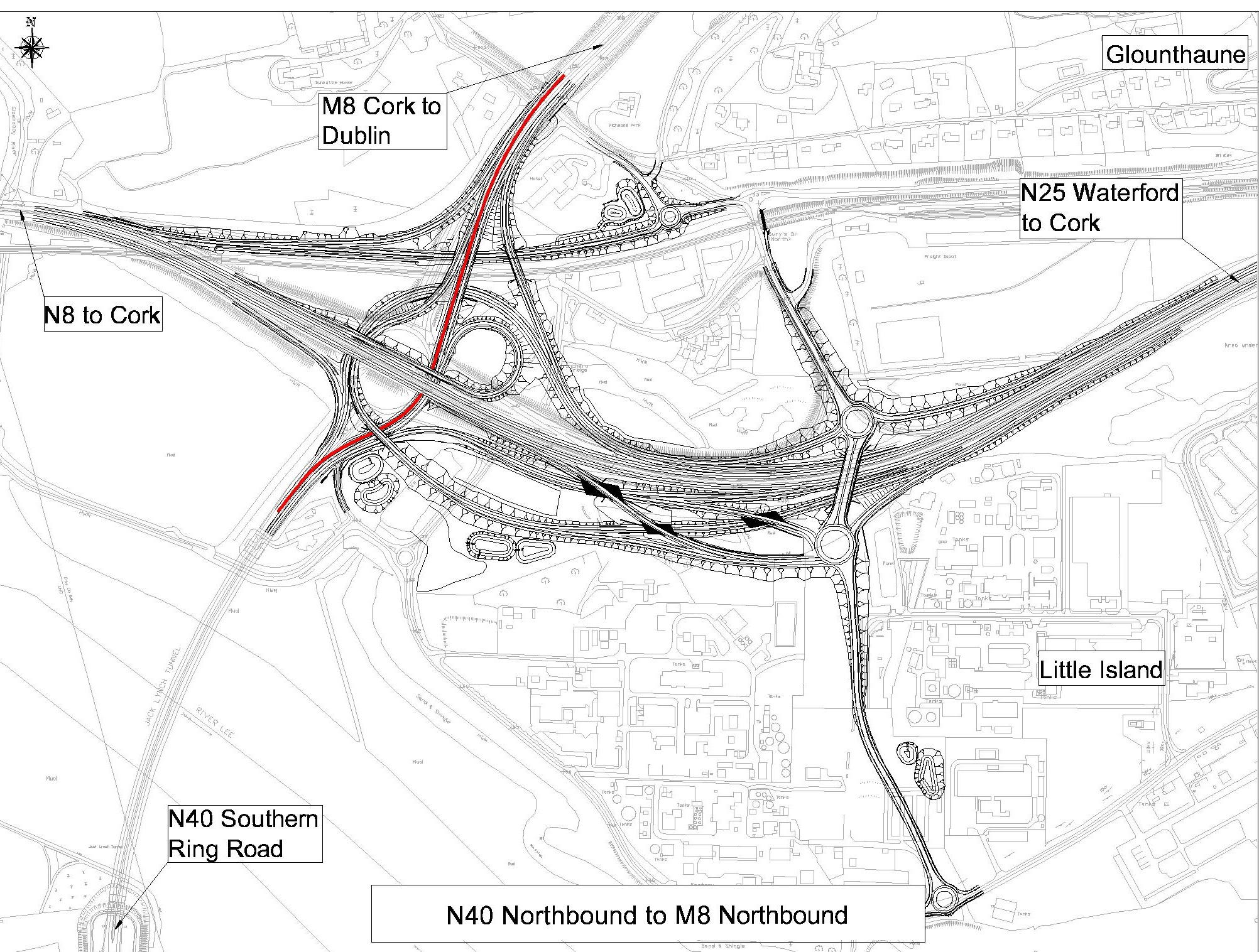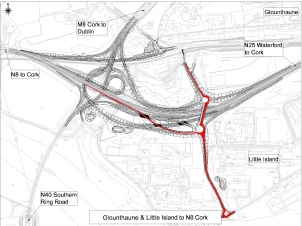Improve Capacity, Reduce Congestion, Minimise Disruptions
Transport Infrastructure Ireland (TII) has developed proposals to improve the Dunkettle Interchange which is located approximately 6km to the east of Cork City, just north of the Jack Lynch Tunnel. The Interchange is strategically important as it is the intersection of a number of key national routes:
- The M8/N8 Dublin to Cork Road;
- The N25 Cork to Waterford Road; and
- The N40 Southern Ring Road (through the Jack Lynch Tunnel).
The existing interchange comprises a signalised roundabout, with a free flow overpass for traffic travelling east-west along the N25, and vice versa. Traffic not using the overpass must negotiate the circulatory carriageway (roundabout) which is controlled via traffic signals.
The photo montages below, taken from the Environmental Impact Statement, show the existing interchange and how it might look when works are complete.
 |
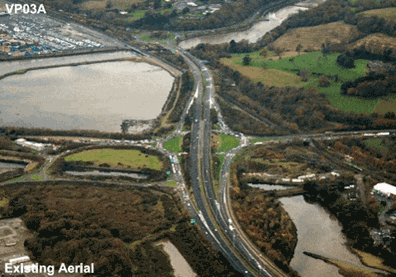 |
| Before/after aerial photo montage - from southwest | Before/after aerial photo montage - from east |
The proposed development involves the reconfiguration of the existing Dunkettle Interchange to a free flowing interchange, in so far as practicable. That is to say, traffic will not come into conflict with opposing traffic movements either by yielding or stopping at traffic signals, as is the case with the existing interchange.
The proposed development includes the following elements of infrastructure:
- A series of direct road links between the N8, the N25 and the N40 and links to the R623 Regional Road in Little Island and Burys Bridge in Dunkettle;
- 1 grade separated junction arrangement at the existing N25 to the east of the existing Dunkettle Interchange;
- 4 roundabouts – 2 at the grade separated junction and 2 at tie-ins with the existing road network;
- 52 structures of various forms;
- Several culverts where the scheme crosses watercourses or intertidal areas;
- Intelligent Transport Systems;
- Pedestrian and cyclist facilities.
Schematic plan of Dunkettle Interchange Upgrade

